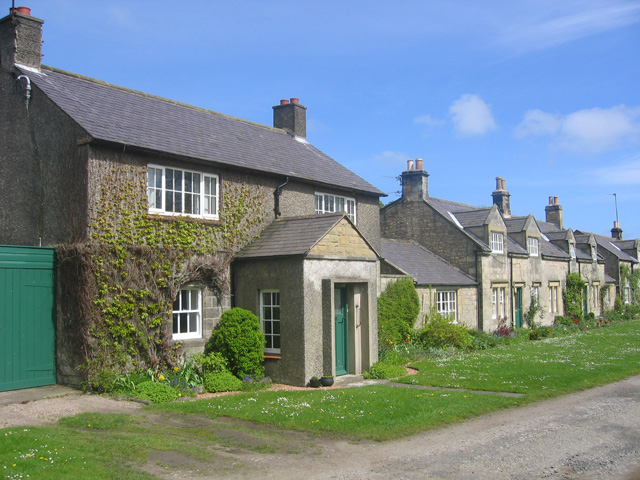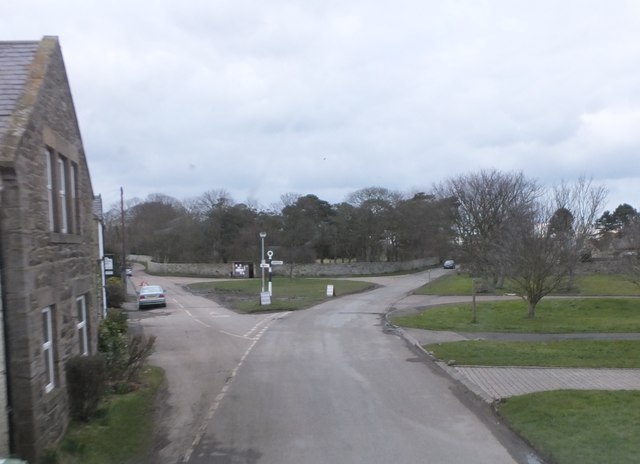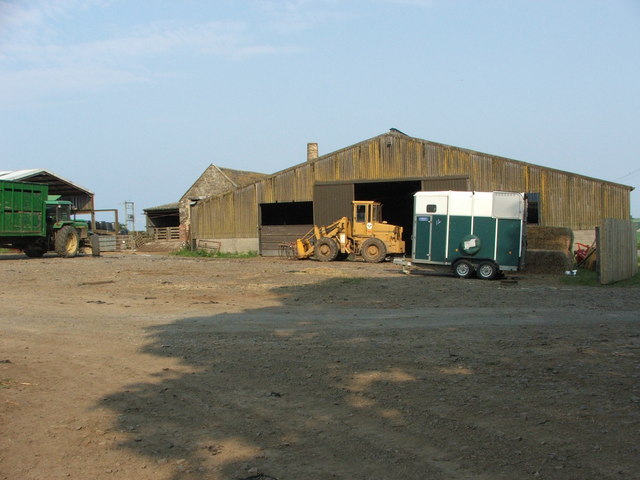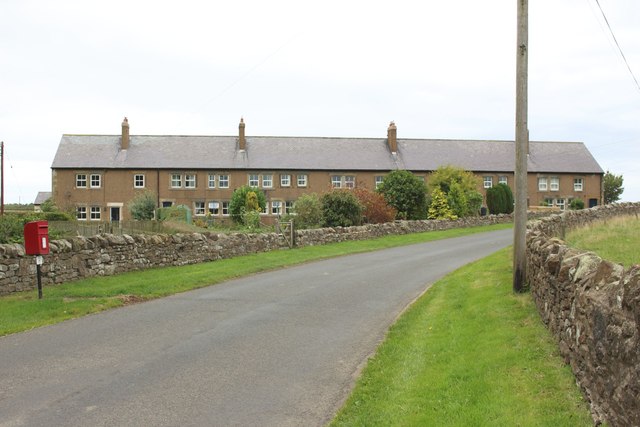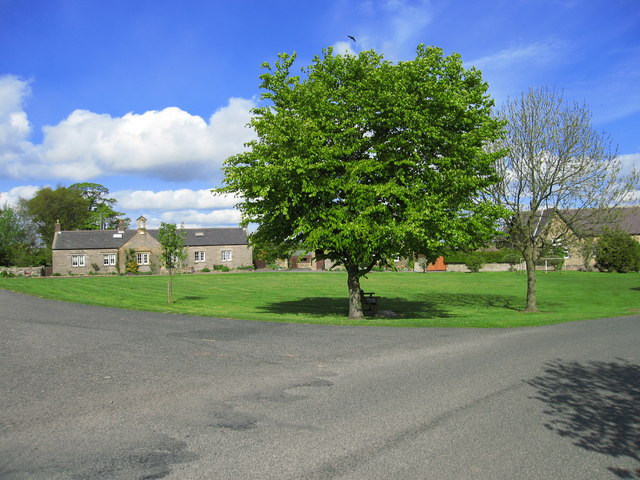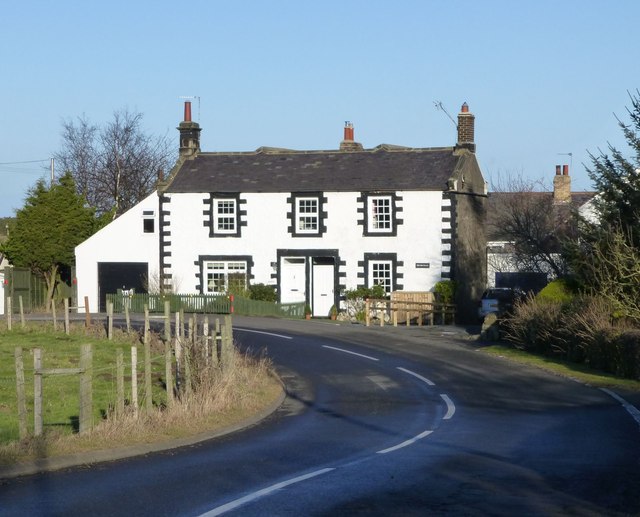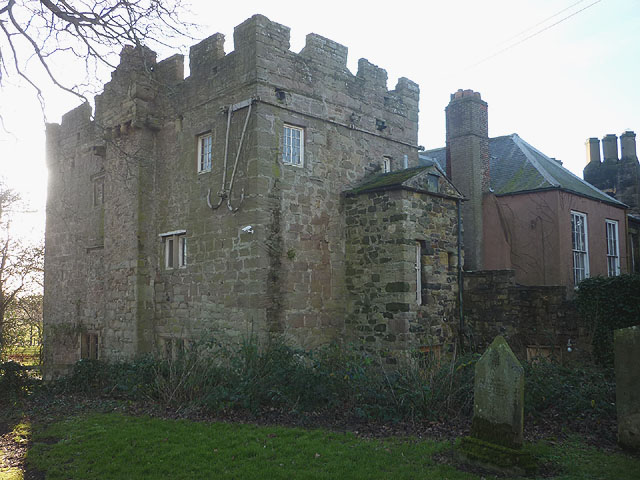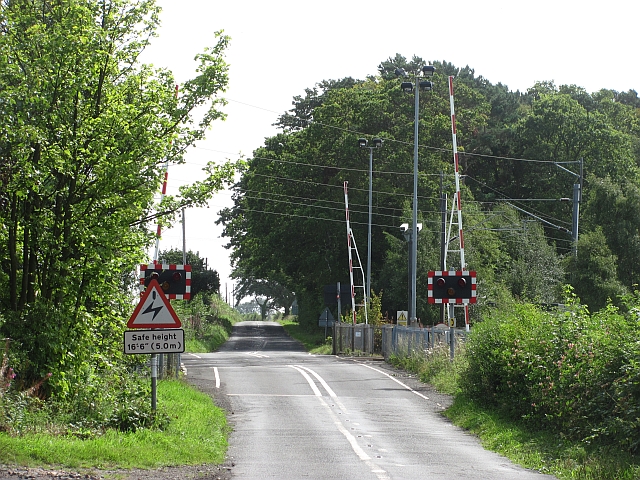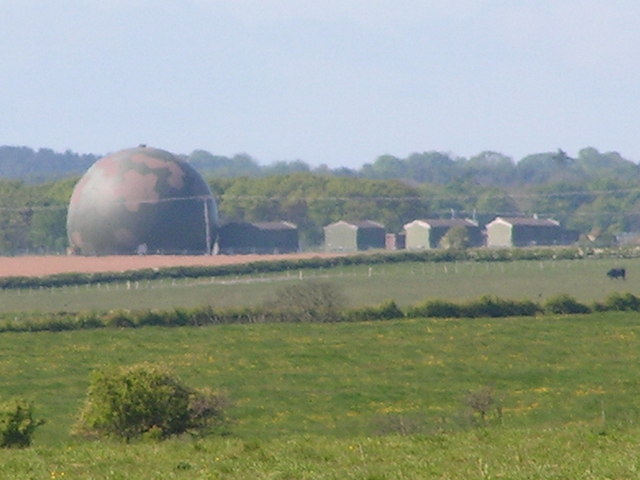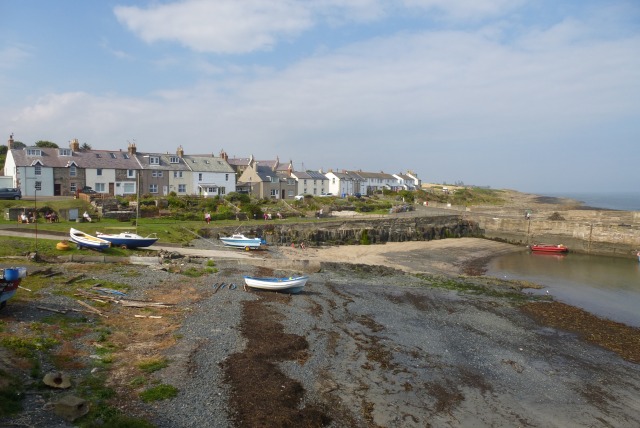Topics > Northumberland > Civil Parishes in Northumberland > Embleton Civil Parish > Embleton Parish, 1855
Embleton Parish, 1855
Extract from: History, Topography, and Directory of Northumberland...Whellan, William, & Co, 1855.
EMBLETON PARISH
EMBLETON parish comprises the chapelries of Rock and Rennington, and the townships of Broxfield, Brunton High and Low, Craster, Dunston, Embleton, Fallowden, Newton by the Sea, and Stamford. It is bounded on the north by Doxford and Tuggall, on the west by North and South Charlton, on the south by Howick, Longhoughton, and Denwick, and on the east by the German Ocean. It is about five miles long by three and a half broad, and comprises an area of 13,228 acres. The population of this parish in 1801, was 1,515; in 1811, 1,526; in 1821, 1,806; in 1831, 1,929; in 1841, 2,030; and in 1851, 2,275.
BROXFIELD township is situated two miles north by east of Alnwick, and contains 315 acres, the property of Clavering Calliley, Esq. Its population in 1801, was 41; in 1811, 43; in 1821, 28; in 1831, 29; in 1841, 24; and in 1851, 38 souls, Rateable value £345.
DIRECTORY. George Marshall and Thomas Thompson, farmers.
BRUNTON HIGH AND LOW is a township, containing 238 acres, the property of Sir George Grey and John Railston, Esq. It is situated one mile and a half north-west of Embleton, and its rateable value is £1,742 6s. 8d. In 1801, it contained 77; in 1811, 48; in 1821, 70; in 1831, 62; in 1841, 59; and 1851, 73 inhabitants.
DIRECTORY. George Bell, joiner, Low Brunton; and Michael Wilkinson, senior, and junior, farmers.
CRASTER township is situated six miles north-east of Alnwick. It contains 796 acres, and its rateable value is £1,120, T. W. Craster, Esq., and Major Clutterback are the landowners. The number of inhabitants in 1801, was 100; 1811, 118 ; in 1821, 146; in 1831, 212; in 1841, 247; and in 1851, 222 souls. This township has been held by the Craster family since the 13th century, and is one of the few manors in the country, which is yet held by the family to whom it was originally granted. CRASTER TOWER is a neat edifice, surrounded by some fine old woods, through whose foliage a fine view of the sea may be obtained.
DIRECTORY. T. W. Craster, Esq., Craster Tower; James Grey, farmer; William Wood, farmer; and Charles Archbold, innkeeper.
DUNSTON is a township and hamlet, containing 1,663 acres, the property of the Earl of Tankerville and T. W. Craster, Esq. Its population in 1801, was 177; in 1811, 209; in 1821, 213; in 1831, 185; in 1841, 218; and in 1851, 256 souls. Rateable value £1,696 11s. 0d. THE HAMLET of Dunston is situated about six and a half miles north-east of Alnwick, and is remarkable as being the birth-place of the celebrated Duns Seotus, who, when a boy, entered the Francisan Convent, in Newcastle, becoming afterwards a friar of that order. In the year 1301, after becoming a fellow of Merton College, Oxford, he was elected professor of theology in the University, to which his great fame drew many scholars. He afterwards resided at Paris, and died at Cologne, on November 8th, 1308. In his day he was considered a prodigy of learning. and obtained the title of the Subtle Doctor. His works fill ten volumes, folio.
DUNSTANBROUGH CASTLE has long since fallen to decay, nothing now remains but a few crumbling ruins, which occupy an eminence above the sea, two miles E.S.E. from Embleton. It is very probable that this castle was originally a British stronghold and afterwards fortified by the Romans. We do not, however, find it noticed previous to the early part of the 14th century, when it appears to have been rebuilt by Thomas, Earl of Lancaster, general of the confederate army against Edward II. This Thomas was also owner of Pontefract Castle, in the vicinity of which place he was beheaded, after his capture by the royal troops at Boroughbridge. Though he suffered as a traitor, he was revered by the people as a martyr, and styled by them a saint; the place where he suffered is called to this day by the inhabitants of Pontefract and its neighbourhood, St. Thomas's Hill. All that remain at present of Dunstanbrough Castle are the outworks on the south and west sides, which, with the large cliffs, enclose an area of about nine acres. On the north side the rocks rise to the height of about thirty feet. On the north-west point, the wall extends along the edge of a precipitous rock, having a high square tower of excellent masonry in the centre, with turrets at each corner, and from its appearance this is supposed to be the most modern portion of the castle. In the south wall is a gateway, which was formerly defended by two strong semi-circular towers, surmounted by square turrets. This wall reaches to the sea cliffs, and is protected by two square bastions, a small sally-port, and a square tower. Near the eastern tower we may trace the ruins of the castle chapel, beneath which there is a chasm in the rock sixty feet long ,and forty feet deep, where the sea makes a dreadful inset, during ,stormy weather. The country people call this the Rumble Churn, and it must be confessed that it presents a very awful appearance when viewed from the walls of the old tower.
DIRECTORY. William Darling, farmer; George Fawcers, farmer; Marshall Luckley, gardener; Alexander Murray, innkeeper; John Pringle, farmer; George Scott, farmer; and Ralph Graham, carrier to Alnwick, on Saturdays.
EMBLETON, a township and village in the parish of the same name, contains 2,394 acres, of which the rateable value is £4,525 7s. 9d. Its population in 1801, was 294; in 1811, 312 : in 1821, 413; in 1831, 492; in 1841, 525; and in 1851, 656 souls. The Manor of Embleton was, in ancient times, the property of John le Vicount, who held it by the service of three knights fees. On his decease it passed by the marriage of his daughter to the Marisco family, and was afterwards purchased by Simon de Montford, Earl of Leicester, upon whose attainder it reverted to the crown. It was subsequently given to Edmund, Earl of Lancaster, whose grandson dying without male issue, the manor was divided between his two daughters, Maud and Blanche. The latter married the celebrated John of Gaunt, Duke of Lancaster, whose son and heir, Henry of Bolingbroke, afterwards became Henry IV.; when the manor became a royal fief. It is now the property of the Earl of Tankerville.
THE VILLAGE of Embleton is situated about a mile west from the sea, and seven miles N.N.E. of Alnwick. THE PARISH CHURCH, dedicated to the Holy Trinity, is a neat stone building, restored by subscription in 1850, under the direction of the present vicar. The living is a vicarage in the archdeaconry of Lindisfarne and deanery of Alnwick, valued in the Liber Regis at £11 3s. 4d.; gross income, £856. Patrons, the Wardens and Fellows of Merton College, Oxford. Rev. George Rooke, vicar. THE SCHOOL was erected in 1825, and is endowed with eight and a half acres of land, bequeathed by the Rev. Vincent Edwards, a former vicar, for the education of poor children. A sum of money was bequeathed by the same gentleman to the poor of this parish, in the year 1778, but the intentions of the donor were not carried out, and the money was applied to the construction of a gallery in the church. A Reading Room and Library were opened here in February 1854; the gentlemen in the neighbourhood being annual subscribers. CHRISTON BANK, in this township, is the seat of George Dunn, Esq.
CHARITIES. The Rev. Vincent Edwards, in 1712, bequeathed the sum of £40 to the school of Embleton, and a similar sum to the poor of the parish, half of the interest to be distributed yearly on the anniversary of his decease, by the minister and churchwardens, and the other half to be laid out in bibles, prayer books, and the Whole Duty of Man, for the poor, by the minister only. He also gave £20 to each of the chaplains of Rock and Rennington in this parish, the interest to be paid to a master for teaching three poor children to say their catechism, read, write, and accounts. The sum of £20 given to the chapelry of Rock has been increased by interest to £24. The sum of £20 bequeathed to the chapelry of Rennington, appears to have been lost, previous to the year 1798, by the failure of a person in whose hands it bad been placed. Thomas Wood, who died in July 1747, left £10, one moiety of which was to be distributed among the poor of the township of Fallowden, and the residue among the other townships of the parish.
POST OFFICE, Embleton, John Morton, postmaster. Letters arrive, from Alnwick, at 12-30 noon, and are despatched thereto at 5-15 p.m.
DIRECTORY
|
Davison James, joiner Dunn George, Esq. Christon Bank Embleton Robert C. surgeon Moore Geo. station master, Christon Bank Rooke Rev. George, vicar, Vicarage Ross Rev. Wm. (Presbyterian) Short Leonard, miller Smith Thomas, saddler
Blacksmiths Hutchins William Scott James
Boot and Shoemakers Dickinson John Dickinson Robert Mavin Joseph
Butchers Cairns Robert Errington Joseph
Farmers Coxon Richard and Robert, Glebe Farm Mavin George, North Farm Oswald George, Embleton, East Side Rogers Thomas, South Farm Smith Thomas, Wood Stead
Grocers Bowey Thomas Gibbison Alice |
Morten John Pitt William, and baker Scott Andrew
Inns and Taverns Blinkbody Hotel, A. Mennin, Christon Bank Blue Bell, Henry Patterson Grey's Inn, James Elliott Hare and Hounds Inn (and stabling), Thos. Deveney Railway Inn, Joseph Mavin Three Tuns, Thomas Smith
Beerhouses Embleton Thomas McDowell William
Schools Jessop Edwin Weatherley Mary
Slaters and Plasterers Wood Joseph Wood Robert
Stonemasons Stewart Robert Taylor Richard
Tailors Humble Edward Stephenson Peter Stephenson Robert |
CONVEYANCE by railway, from the station at Christon Bank.
CARRIERS. -Andrew Scott, Thomas Bowey, and Alice Gibbison, to Alnwick on Saturdays
FALLOWDEN township is situated six miles north by east of Alnwick, and contains 1,024 acres the property of Sir George Grey. Rateable value £1,056 10s. Its population in 1801, was 92; in 1811, 79; in 1821, 112; in 1831, 105; in 1841, 113; and in 1851, 122 souls. This township was formerly the property of Samuel Salkeld, Esq., and afterwards of Thomas Wood, Esq., whose only daughter and heiress married Sir Henry Grey, Bart., from whom the estate has descended to the present proprietor. It is subject to a rent charge of £5 annually for the education of poor children. FALLOWDEN HALL is the residence of Sir George Grey. Mrs. Scott is the only farmer in this township.
NEWTON BY THE SEA is a township and village containing 1,411 acres, the property of Captain Potts, and Joseph Gordon Forster, Esq. The number of inhabitants in this township in 1801, was 200; in 1811, 178; in 1821, 247; in 1831, 271; in 1841, 282; and in 1851, 274 souls. Its rateable value is £1,947. THE VILLAGE of Newton by the Sea is situated eight and a half miles north-east by north of Alrlwick. The inhabitants are chiefly employed in fishing, great quantities of turbot, lobsters, and hehings are frequently caught.
DIRECTORY. Joseph G. Forster, Esq.; William Chirnside, farmer; George Gaggy, innkeeper; Ralph Pringle, fish-curer; and W. Watkin, farmer.
RENNINGTON is a chapelry, township, and village, the property of the Duke of Northumberland, and comprises 1,812 acres, of which the rateable value is £2,069. 18s. Its population in 1801, was 252; in 1811; 270; in 1821, 272; in 1831, 273; in 1841, 245; and in 1851, 269 souls. THE VILLAGE of Rennington occupies a sheltered situation three and three quarter miles north-east by north of Alnwick. THE CHAPEL, dedicated to All Saints, is an ancient edifice, the register of which commences in 1768. The living, a perpetual curacy in the archdeaconry of Lindisfarne and deanery of Alnwick, is returned at £46; gross income £59. Patron, the vicar of Embleton; incumbent, the Rev. David Ingleby, who also attends Rock Chapel.
CHARITY. John Scott, who died in 1738, left £10 to the poor of this chapelry. The interest of this sum is given to the poor of Rennington and Brocksfield annually at Whitsuntide.
DIRECTORY. Rev. David Ingleby; Mary Dawson, shopkeeper; Robert Downey, schoolmaster and chapel clerk; John Stewart, shopkeeper; John Todd, innkeeper and blacksmith; and the farmers are George Dickman, John Dickman, William Forrest, John Rutherford, Robert Straughan, William Straughan, John Thompson, and William Whittle.
ROCK is a chapelry, township, and village, the property of the Rev. R. Bosanquet, J.P. The township comprises an area of 1,973 acres, and the number of its inhabitants in 1801, was 160; in 1811, 152; in 1821, 185; in 1831; 206; in 1841, 227; and in 1851, 250 souls. Rateable value £2,269 15s. 10d. The manor of Rock was formerly held under the barony of Alnwick by a family that bore the local name. It passed from the Rocks to the Lawsons, and from them to the Salkelds and Proctors, the latter of whom disposed of it to the late Peter Holford of London, by whose son it was sold to the Bosanquet family with whom it has since continued. THE VILLAGE of Rock is situated on an eminence commanding a fine prospect of the surrounding country. The soil in the neighbourhood is very fertile, and the scenery in the vicinity is grand and romantic. THE CHAPEL is dedicated to S.S. Philip and James. The living, a perpetual curacy in the archdeaconry of Lindisfarne and deanery of Alnwick, is united to that of Rennington. It is returned at £46. 10s.; gross income £59; and is in the patrortage of the vicar of Embleton. Here is a FREE SCHOOL endowed with several small sums, besides a house for the teacher. ROCK HALL, the residence of the Rev. R. Bosanquet, is a fine old mansion.
DIRECTORY. Rev. R. Bosanquet, J.P., Rock Hall; James Aitchinson, farm-steward; Robert Weir, blacksmith; and the farmers are George and Thomas Barber, Thomas Sharpe, and George and Joseph Rochester.
STAMFORD is a township containing 1,602 acres, the property of the Earl of Tankerville, and its rateable value is £3,465. 10s. Its population in 1801, was 122; in 1811, 117; in 1821, 120; in 1831, 94; in 1841, 90; and in 1851, 125 souls. It is situated four and three-quarter miles north-east by north of Alnwick, and is farmed by Mr. William Davison.



